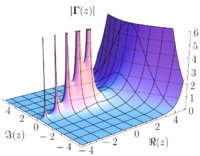
Photo from wikipedia
Conduction velocity error is often the main culprit behind the need for very fine spatial discretizations and high computational effort in cardiac electrophysiology problems. In light of this, a novel… Click to show full abstract
Conduction velocity error is often the main culprit behind the need for very fine spatial discretizations and high computational effort in cardiac electrophysiology problems. In light of this, a novel approach for simulating an accurate conduction velocity in coarse meshes with linear elements is suggested based on a modified quadrature approach. In this approach, the quadrature points are placed at arbitrary offsets of the isoparametric coordinates. A numerical study illustrates the dependence of the conduction velocity on the spatial discretization and the conductivity when using different quadrature rules and calculation approaches. Additionally, examples using the modified quadrature in coarse meshes for wave propagation demonstrate the improved accuracy of the conduction velocity with this method. This novel approach possesses great potential in reducing the computational effort required but remains limited to specific linear elements and experiences a reduction in accuracy for irregular meshes and heterogeneous conductivities. Further research can focus on developing an adaptive quadrature and extending the approach to other element formulations in order to make the approach more generally applicable. This article is protected by copyright. All rights reserved.
Journal Title: International journal for numerical methods in biomedical engineering
Year Published: 2022
Link to full text (if available)
Share on Social Media: Sign Up to like & get
recommendations!